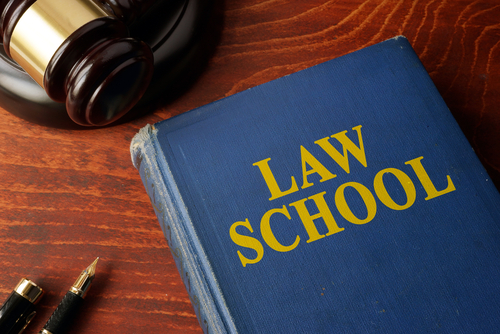Applications for law school up an 'unnatural' 35% from 2023

It’s shaping up to be very competitive year for aspiring law students. (Image from Shutterstock)
It’s shaping up to be very competitive year for aspiring law students, with the number of applicants to law school jumping 25% and applications to law schools up a whopping 35% over a year ago, according to the Law School Admission Council’s latest figures.
“It’s unnatural. Demographically, there are no more college students graduating this year than there were last year,” says school admissions consultant Mike Spivey of Spivey Consulting.
The large increases can be attributed, in part, to the delay of last year’s application cycle, as many law schools waited to adjust their essay and personal statement sections after the U.S. Supreme Court’s 2023 decision to bar race as a consideration in higher education admissions, says Susan Krinsky, LSAC interim president and CEO.
“Last year’s slow start means that year-to-year comparisons at this early stage may overstate the growth in applicants,” she says.
There is still a long way to go in the admissions season. In 2024, the number of applicants on Dec. 4 accounted for 39% of the ultimate total, according to the LSAC.
But Spivey says as time passes and admissions season ends, the increase in applicants could land closer to 15%, he told the ABA Journal. He says some students rushed to take it while the “logic games” were still on the Law School Admissions Test, he adds. The deductive reasoning section made its last appearance on the LSAT in June, and it was replaced with a second reading comprehension section or logical reasoning questions starting in August.
“Anyone who was good at the logic games rushed to take the LSAT over the summer. Then the people who were bad at it took it in September and November, so you have this huge frontloading effect,” he adds. “It’s why the numbers are so crazy up now.”
An extra day was added to the June administration of the LSAT to accommodate the increase in demand. In addition, registration for November’s test had 33,103 registered test-takers, up from 23,798 a year earlier, according to the LSAC.
Krinsky disagrees that the change in the test caused more people to apply. “I don’t think you decide to go to law school because of one section of the LSAT,” she says. She noted that bump in applicants echos a similar jump in 2021. “It goes in cycles,” she says.
Also, election years typically elicit more interest in attending law schools.
“In any election, we see people thinking about policy shifts they’d like to see in ways that they can make an impact,” says Maya Russell, prelaw advisor at Furman University and chair of the Pre-Law Advisor National Council.
While all regions experienced a minimum 25% increase in applications, the South Central region had the highest jump with 54.2%. The next busiest regions were the Northwest and Far West at 41.7% and 40.4%, respectively. This increase in applications resulted in almost all ABA-accredited law schools seeing more applicants, except for six law schools that experienced a 1% to 9% drop in application and one with decrease of 50% or greater, according to LSAC figures.
Meanwhile, all regions saw the number of applicants increase, with the biggest jumps coming from the Northwest, which had a 38.7% uptick, the Northeast with 30.3% and the Far West at 30.1%, according to the LSAC.



